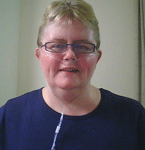dsm wrote:Am interested as to if our other investigative members (SWS where are you ) have any thoughts re the Weinmann claims.
Thanks for sharing your many SV thoughts, Doug.
Here's a marketing summary of the present Weinmann product offerings:
http://www.weinmann.de/uploads/media/B_ ... N_1108.pdf. For the sake of reader clarity, I should probably point out that Weinmann uses their own proprietary term Oscillatory Pressure Signal (OPS) in lieu of this thread's more generic term Forced Oscillation Technique (FOT). My observation has always been that Weinmann does some incredibly innovative things with PAP machine design. The down side may be that their innovative designs have no competitor predicate devices (that are close enough in functionality) to make for a more expedient FDA approval process. Unfortunately high-end Weinmann machines don't seem to be available in the U.S.A. for lack of FDA approval.
I think industry-wide Forced Oscillation Technique (FOT), as a differentiation technology, has been interesting to watch from our distant perspective as PAP machine consumers. One interesting point of consideration is that FOT is a slightly-invasive detection technique. Resmed cites a concern in their own patent description that forced oscillation as a detection method has the potential to disturb sleep. With the exception of one highly-specialized AutoSet model that is not readily available, Resmed has apparently elected to avoid the technique altogether.
At this point in wondering just how technically-feasible FOT might be as a central-versus-obstructive detection method, I would personally consider the possibility of non-technical factors such as competitor marketing, business-oriented political strategy, etc. For all I know FOT, as a minimally-invasive detection technique might be: 1) a superior detection technique with no downside, 2) problematic regarding sleep disturbances in a significant percentage of patients, or perhaps even 3) a detection method that rightly enjoys stature somewhere in the middle of those two extremes.
Weinmann used to devote considerably more marketing text highlighting their oscillation detection method as unique and highly effective. But that was a few years ago when they were advertising their original SOMNOsmart APAP machine. I believe at the time they only offered one APAP design. However, I have noticed that Weinmann now devotes very little marketing text to underscoring that same oscillation detection method employed in their SOMNOsmart 2. For all I know, that marketing decision may have been forced by Weinmann's competitors having effectively played down FOT as a viable detection method. IMO there may be genuine epidemiological merit to those claims, or the claims may simply be strategical competitor claims with little or no technical merit. Such are the realities of an inherently competitive global free market I suppose.
The Weinmann product sheet I have linked above happens to include a new APAP design that does
not employ FOT (also called "OPS" by Weinmann). However, like the SOMNOsmart 2, that new APAP model takes a multivariate algorithmic approach toward differentiating central-versus-obstructive sleep events. Both APAP models employ a multivariate approach because they actually rely on an
entire variety of flow signal components and variables to differentiate central events from obstructive events. However, the new SOMNObalance e APAP model does not use FOT in its multivariate approach toward SDB differentiation. Rather it relies on Obstructive Pressure Peak (OPP) technology instead. Unlike FOT, OPP is a non-invasive detection method.
Unfortunately the Weinmann marketing literature doesn't tell us whether the SOMNOvent CR happens to rely on OPP, FOT ("OPS"), neither differentiation method, or both. But the bottom-line question will always be:
"How much efficacy will any machine design lend an entire patient population?" Unfortunately that most crucial question can never be answered by analyzing marketing sheets and patent descriptions alone. Regardless, the SOMNOvent CR seems to be the most feature-rich of all current SV type designs. Hope it's a winner!










